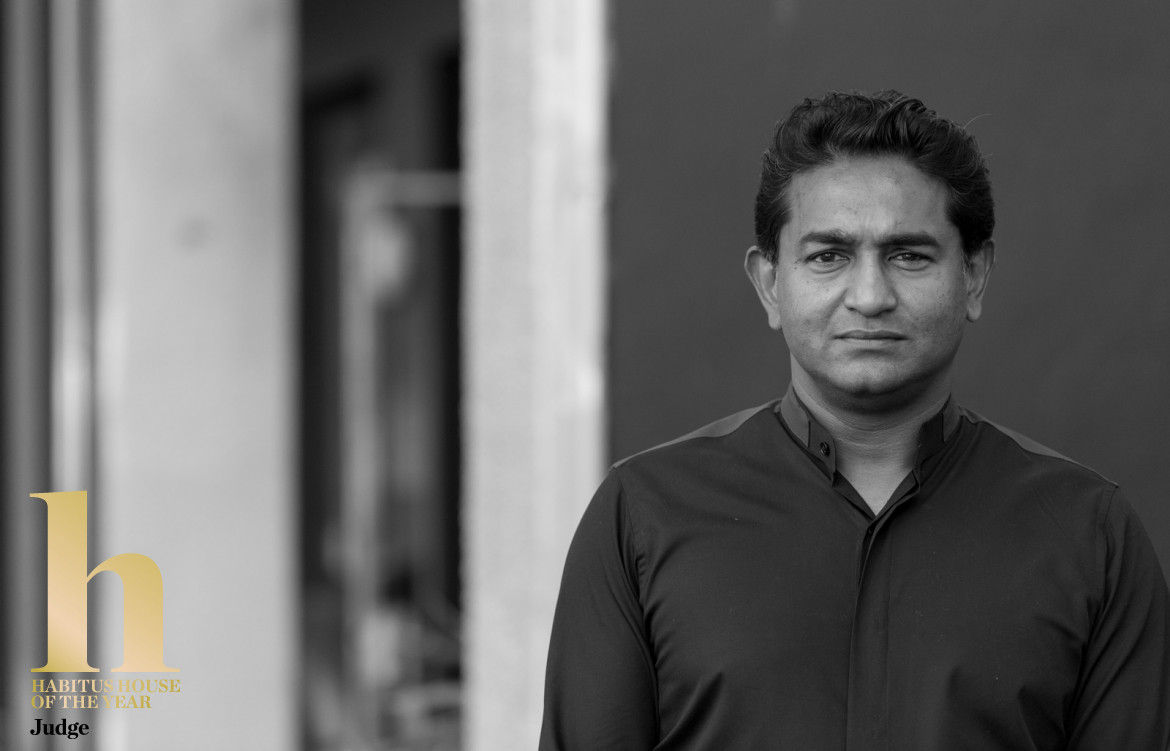Print media is a notoriously tough industry to crack. Publishers must contend with not only rapidly changing tastes and often-fickle audiences but also with the challenge of remaining relevant in an increasingly digital climate. Few understand this better than Raj Nandan, CEO and Founder of Indesign Media Asia Pacific, the home of beloved regional magazines including Indesign, Lookbox, CUBES, and Habitus. Over the past eighteen years, Raj and his team have crafted engaging, authentic publications that celebrate the uniqueness of the Indo-Pacific and have carved out a well-deserved niche for the region on the global design stage.
By the time Habitus launched in 2008, the eponymous Indesign magazine had already established itself as the leading resource for architects and other design professionals within our region. Still, Raj saw a gap in the market and reached out to collaborators for their input on how to fix it. “Habitus was the result of conversations I had with Paul [McGillick, Habitus Founding Editor] about the lack of a magazine that made design accessible to the design-savvy individual,” he explains, “It didn’t matter if you were a doctor, or a lawyer, or an accountant, or a café owner: if you were the kind of person who appreciated the story behind things – rather than just wanting to get the look – we wanted to speak to you.”
Over the years Habitus has remained true to this vision and played a critical role in introducing design into the mainstream cultural landscape. At a time when other publications still framed design as exclusive and seasonal, Habitus championed thoughtful, authentic design that transcended brands and trends. “It gave [design-savvy individuals] a credible voice to listen to and follow that was about more than just getting ‘the look’,” says Raj, “Habitus has never covered trends.”
To this day, the core of Habitus’ credibility is a commitment to presenting design as a way of life rather than falling into the familiar groove of a lifestyle magazine. The magazine has remained a meticulously curated showcase of thoughtful projects of all scales and budgets that challenge the idea that good design is synonymous with a high price tag. As Raj puts it: “Habitus isn’t interested in portraying wealth and richness in the traditional sense – we’re more about showcasing design that’s a personal, considered expression of what people really do at home and their way of life.”
In eschewing big-ticket projects in favour of refined, idiosyncratic design, Habitus has developed a distinctive, down-to-earth voice that has proved influential within the industry. “We’ve stuck to our guns and played a huge part in redefining design as a normal, accessible currency and not an unusual or cold one: we’ve really challenged the idea that people who like design have to walk around in all black and shut themselves off from the world.”
This passion for accessible design that elevates the day-to-day is evident in Habitus House of the Year, which Raj describes as “the result of having spent so much time – 10 years and thousands of projects – immersed in the region that we have the experience and authority to pick 25 truly remarkable projects and showcase how they shine new light on design as a way of life.” He’s adamant that House of the Year be recognised not as a competition but as a program, explaining that: “With House of the Year we want to not only showcase the talent and original thinking within our region, but also broaden the design conversation: we want to continually challenge what our readers think they know about residential design.”
Raj hopes that the program will highlight the ever-growing strength of design within the Indo-Pacific. “There’s far greater cohesion and stronger design identity throughout our region than ever before,” he says, echoing the comments of Indesign colleague and fellow House of the Year judge Narelle Yabuka, “Some of the houses that we cover in Australia or New Zealand – if you change the background you can just as easily see them in the Philippines, or Thailand, or Singapore. Local identities are definitely maintaining their uniqueness in our region but they’re also listening to one another.”
As a judge of this year’s inaugural program, he’ll be searching for a strong relationship between brief, client, and the finished product, in addition to sensitivity to climate, small spaces, and “the family unit”. “The word ‘considered’ is really important to me,” says Raj, “I need to be able to see that the house is liveable and carefully considered so that it’s not overdesigned or overcomplicated. The projects that really stand out are the ones that are simple – life’s already too complicated!”
View the full shortlist of projects in issue 41 of Habitus, available for pre-ordering today and hitting newsstands this Thursday 27 September. For more about Habitus House of the Year, subscribe to our newsletter or read more here.
We would like to extend a special thanks to our Major Sponsors for their support in the inaugural year of the Habitus House of the Year initiative. Thank you to StylecraftHOME, Sub-Zero Wolf and ZIP Water.

